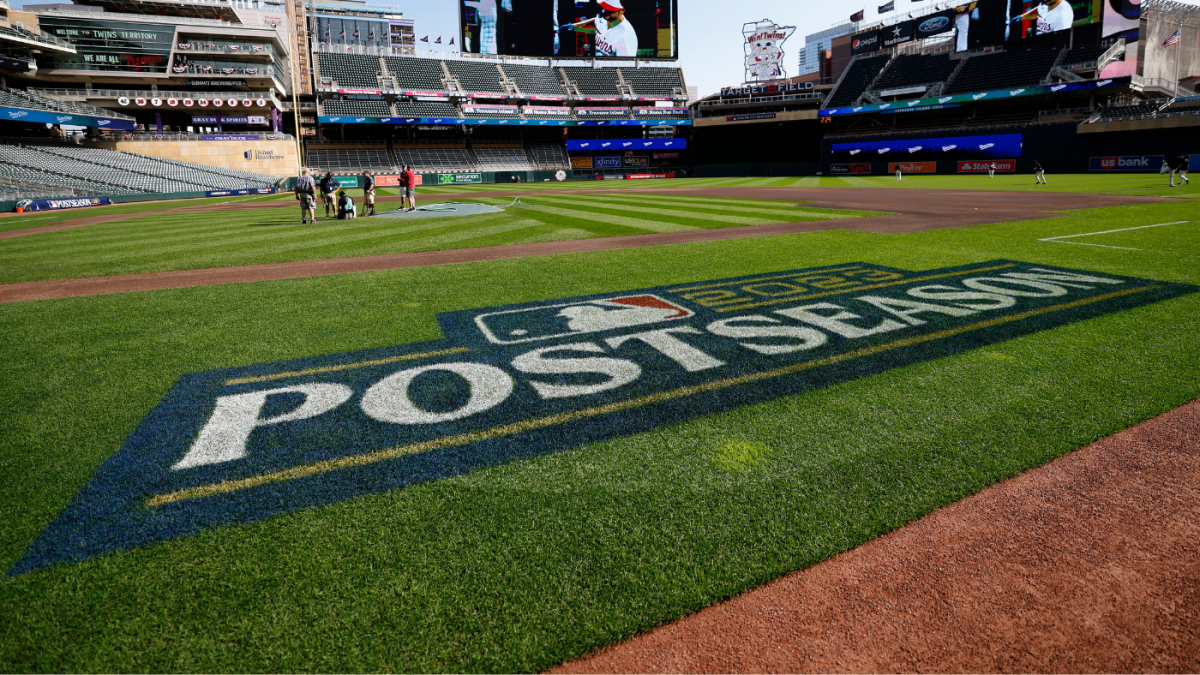Major League Baseball’s postseason will get underway on Tuesday with Game 1 of all four Wild Card Series. This, then, is the opportune time to offer a refresher on baseball’s relatively new playoff format.
“Relatively” is a load-bearing phrase in that sentence given that this October will be the fourth under the current 12-team structure. Each league sends six clubs to the tournament: the three division winners and three wild card entries. The two division winners with the best record in each league earn a first-round bye, with the leftover teams competing in a best-of-three wild card round — the higher seed (the remaining division winner and the wild card team with the best record) hosts each of those three games, giving them a leg up in theory.
Wild card round: Best-of-three seriesDivisional round: Best-of-five seriesLeague Championship round: Best-of-seven seriesWorld Series: Best-of-seven series between AL and NL champion
After the wild card round, the playoff structure follows the more traditional pathway: a best-of-five division series, a best-of-seven championship series, and then the World Series.
Here are four other things you need to know about MLB’s playoffs format.
1. Format implemented in 2022
As noted in the introduction, this is the fourth year since MLB expanded the postseason to 12 teams as part of the Collective Bargaining Agreement with the MLB Players Association. Playoff expansion, once a rare occurrence in MLB, has become a more commonplace development.
Indeed, MLB’s postseason featured only the World Series until 1969. The playoffs expanded then to include the League Championship Series, but that dynamic would remain in place all the way until 1994. From then until 2011, each league sent three division winners and a wild card club to October. MLB added another playoff team in 2012, pitting two clubs in a Wild Card Game.
The playoff field remained at five teams aside, save for one exception, until 2022. That exception, naturally, was the pandemic-impacted 2020 campaign. MLB countered the 60-game season by expanding the playoff field to 16 teams overall, the most in league history.
2. No game 163s
MLB has had to make some trade-offs to accommodate the expanded postseason field and the longer playoff schedule. The most notable casualty was the elimination of the tiebreaker games.
Game 163s didn’t pop up too often — there were six total across the majors from 2000 onward — but when they did, the odd circumstances and amplified stakes produced some memorable tilts. For example, you likely remember the controversial ending of the 2007 affair between the Colorado Rockies and the San Diego Padres that determined the NL wild card entry. (The Rockies would make good on that opportunity by winning the NL pennant.)
These days, ties are determined through a series of other criteria. Those are, in order:
Head-to-head record during the regular season;Intra-division record during the regular season (even if teams don’t share a division);Inter-division record;Team record in last half of intra-league games
Most of the ties that exist these days are settled by the first matter.
3. Lower seeds have a chance at glory
Baseball is a game built around upsets. When a bad team beats a good team in the NFL or the NBA, it’s a headline; when it happens in MLB, it’s just another Tuesday night. That’s also true of the postseason, especially since the introduction of another short series.
It’s not just your imagination. Lower-seeded teams have steadily taken advantage of the new playoff format to author some surprising October runs.
In 2022, the Philadelphia Phillies entered the postseason as the lowest-seeded team on the NL side of the bracket. They went on to pull off three consecutive upsets to reach the World Series. (They were downed by the Houston Astros in six games.) In 2023, the World Series featured a No. 5 seed (the eventual champion Texas Rangers) and another No. 6 seed (the Arizona Diamondbacks). Even last year, when three of the top four overall seeds reached the LCS, the New York Mets overcame their sixth seed placement and came within two wins of claiming the pennant.
There’s no way of knowing which, if any lower-seeded team will make a run this October. What history we have of this playoff format suggests there’s a real chance someone does, however.
4. No automatic runner, but pitch clock remains
MLB has made myriad rule changes in recent years, including the installation of the automatic runner in extra innings and the pitch clock. Only one of the two will be present in October.
If and when postseason games go into extra innings, teams will not be awarded a runner at second base to begin those frames. Instead of an automatic runner in scoring position, the bases will be empty, just as they are at the start of any other half-inning throughout baseball history.

